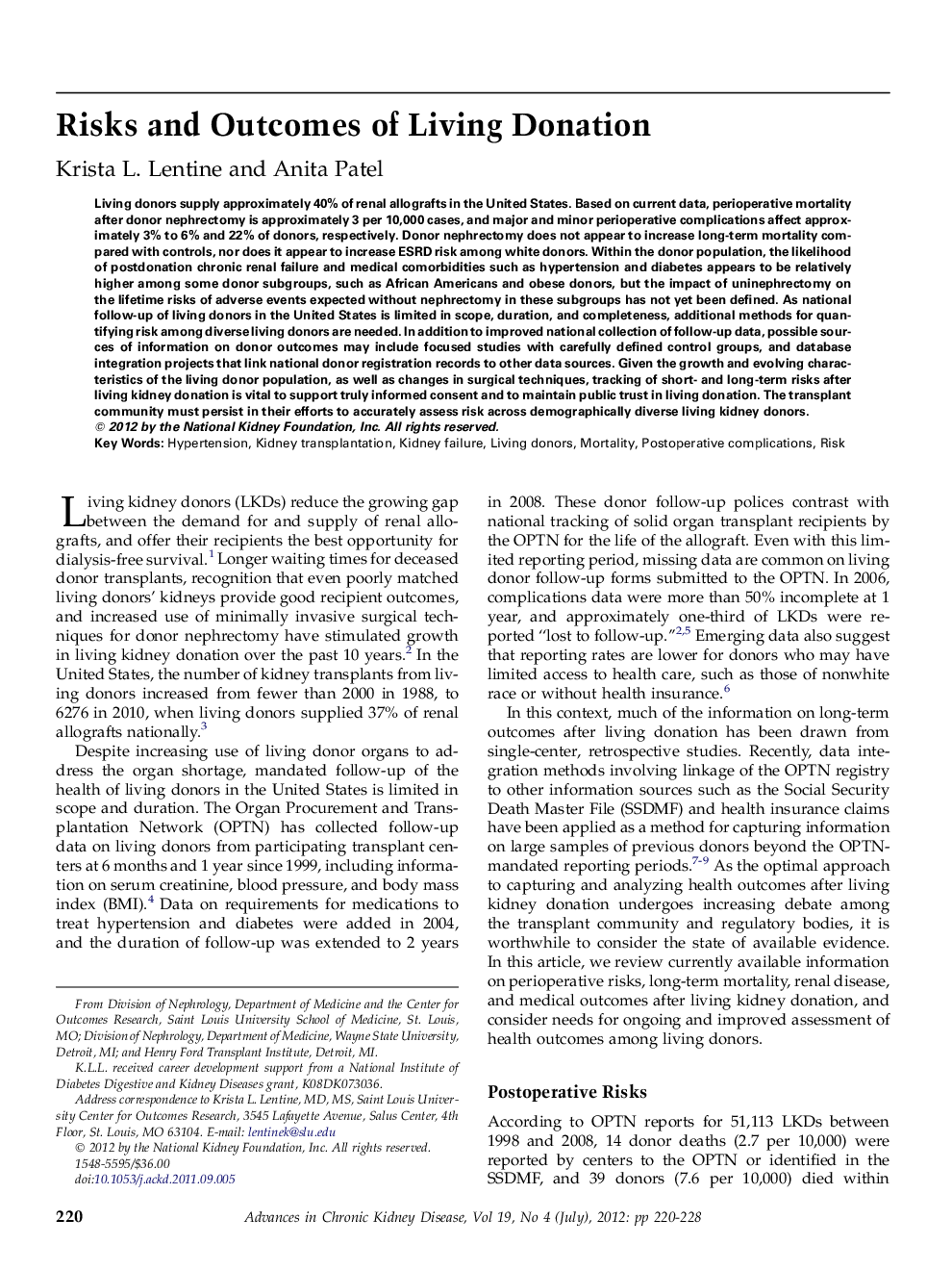| Article ID | Journal | Published Year | Pages | File Type |
|---|---|---|---|---|
| 3846920 | Advances in Chronic Kidney Disease | 2012 | 9 Pages |
Abstract
Living donors supply approximately 40% of renal allografts in the United States. Based on current data, perioperative mortality after donor nephrectomy is approximately 3 per 10,000 cases, and major and minor perioperative complications affect approximately 3% to 6% and 22% of donors, respectively. Donor nephrectomy does not appear to increase long-term mortality compared with controls, nor does it appear to increase ESRD risk among white donors. Within the donor population, the likelihood of postdonation chronic renal failure and medical comorbidities such as hypertension and diabetes appears to be relatively higher among some donor subgroups, such as African Americans and obese donors, but the impact of uninephrectomy on the lifetime risks of adverse events expected without nephrectomy in these subgroups has not yet been defined. As national follow-up of living donors in the United States is limited in scope, duration, and completeness, additional methods for quantifying risk among diverse living donors are needed. In addition to improved national collection of follow-up data, possible sources of information on donor outcomes may include focused studies with carefully defined control groups, and database integration projects that link national donor registration records to other data sources. Given the growth and evolving characteristics of the living donor population, as well as changes in surgical techniques, tracking of short- and long-term risks after living kidney donation is vital to support truly informed consent and to maintain public trust in living donation. The transplant community must persist in their efforts to accurately assess risk across demographically diverse living kidney donors.
Keywords
Related Topics
Health Sciences
Medicine and Dentistry
Nephrology
Authors
Krista L. Lentine, Anita Patel,
